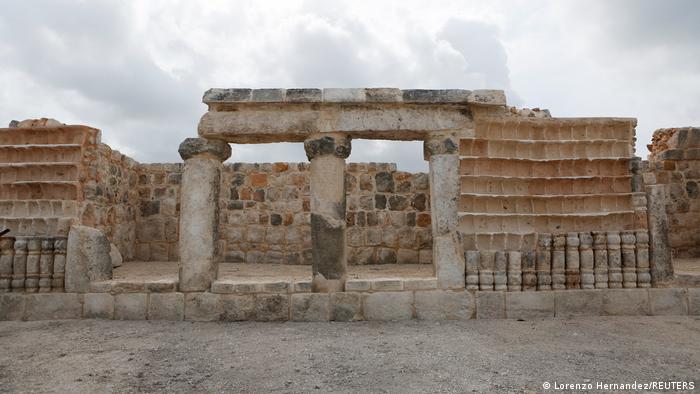The style of architecture of the buildings at Xiol is more typical of the style
found in regions further south
Archaeologists working in the Yucatan region of Mexico have revealed the remains of a centuries-old Mayan city, local media reported on Friday.
The city of Xiol — which means "the spirit of man" in Mayan — is believed to have been the home of some 4,000 people between 600 and 900 CE, during the late classic period.
The area was first uncovered in 2018 on a construction site for a future industrial park close to the town of Merida on Yucatan's northern coast. Archaeologists from the National Institute for Anthropology and History (INAH) then took over the site.

The Mayan civilization was destroyed by Spanish colonizers in the 17th century
Palaces, priests, pyramids
The site is of particular interest due to its Puuc style architecture — famously used for the Chichen Itza pyramid — which is more typically found in the southern part of the Yucatan region.
The archaeologists also highlighted the array of palaces, pyramids and plazas found at the site as well as evidence of various social classes residing there.
"There were people from different social classes ... priests, scribes, who lived in these great palaces, and there were also the common people who lived in small buildings," Carlos Peraza, one of the archaeologists leading the excavations, said. READ MORE...
The site is of particular interest due to its Puuc style architecture — famously used for the Chichen Itza pyramid — which is more typically found in the southern part of the Yucatan region.
The archaeologists also highlighted the array of palaces, pyramids and plazas found at the site as well as evidence of various social classes residing there.
"There were people from different social classes ... priests, scribes, who lived in these great palaces, and there were also the common people who lived in small buildings," Carlos Peraza, one of the archaeologists leading the excavations, said. READ MORE...

No comments:
Post a Comment